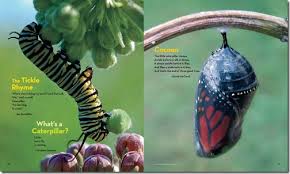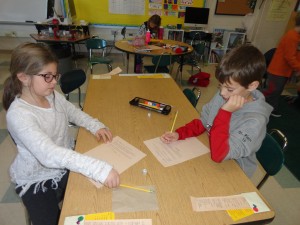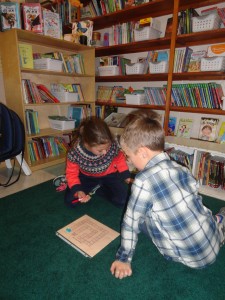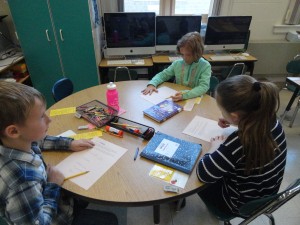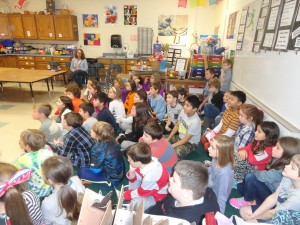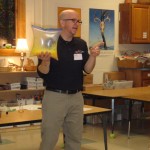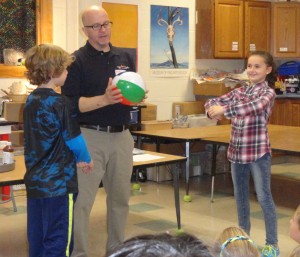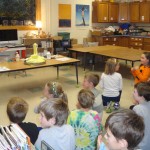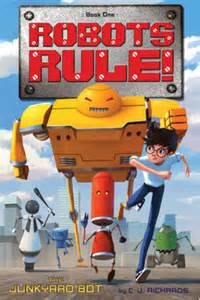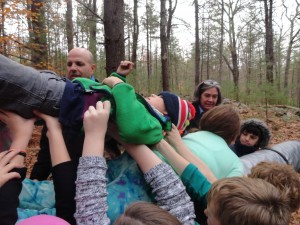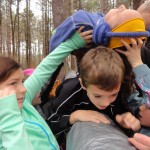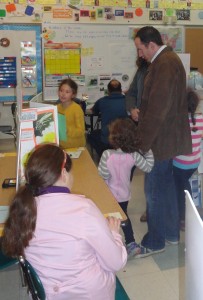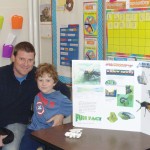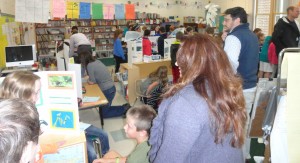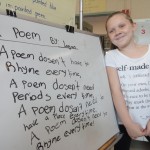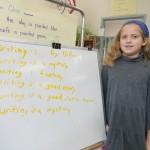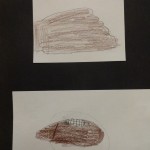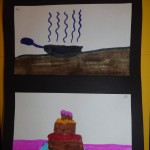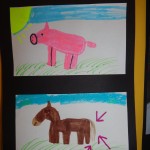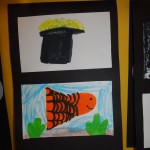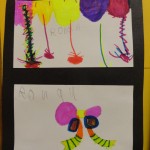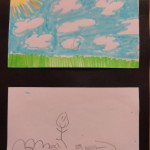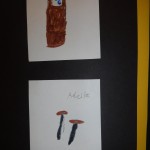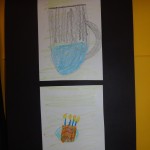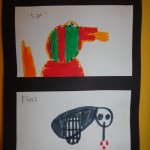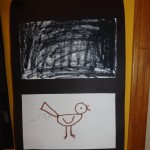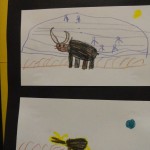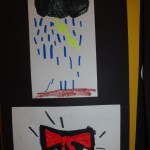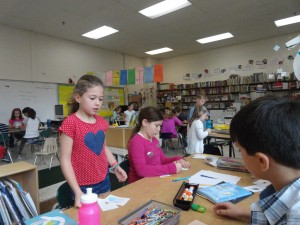 Happy November! This week we have been exploring books by Amy Krauss Rosenthal, writing reflections about ourselves as learners, readers, writers and mathematicians, creating displays for our museum and studying words.
Happy November! This week we have been exploring books by Amy Krauss Rosenthal, writing reflections about ourselves as learners, readers, writers and mathematicians, creating displays for our museum and studying words.
Bugs, Bugs, Bugs –Our first research and writing project
There are so many different learning opportunities that come from preparing for and presenting at a museum. First is learning different research and note taking techniques. Next is time management so information is gathered and verified. After that the children worked to organize and present their information accurately and in an “eye-catching” way. We’ve been exploring different formats for organizing informational writing, looking at leads and uncovering the ways that illustration and information go together to teach.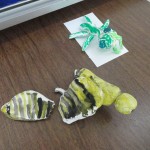
The class is excited to share their work with you at our museum. The children have taken the responsibility for creating their own displays. We’ve talked about planning, proofreading and decorating. We’ve taken time to read from each other’s displays as proofing partners. Some children are more concerned about details, accuracy and conventions than others. With each child we have focused on the things that seem most important for him or her. For some the focus has been on using resources to find understandable information. For others it has been on time management and meeting deadlines. For others the focus has been on building confidence and independence, or writing in complete sentences and being aware of an audience beyond themselves. There is great variety in our class as you will see when you “tour” our museum and talk to the children. Some children have much to share, while others have little. Some children have worked diligently to be accurate in all ways, while others are seemingly unaware that there may be mistakes in their work.
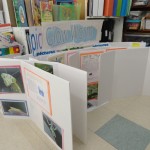 This is our stating point and we will build from here. The children will have several more opportunities to present their work in similar formats throughout the year. We will be able to see them grow and change as they become more skilled as researchers and writers. It is fun to be with them and to feel their enthusiasm grow as they prepare to share their work with you.
This is our stating point and we will build from here. The children will have several more opportunities to present their work in similar formats throughout the year. We will be able to see them grow and change as they become more skilled as researchers and writers. It is fun to be with them and to feel their enthusiasm grow as they prepare to share their work with you.
Taking Time to Know Ourselves as Learners – Social Emotional Learning
The children have been thinking about what they are learning now and how they may grow throughout the year. We’ve been making an effort to become more aware of our choices and more intentional in our actions. To begin the reflection process the children have been looking at their work – either the books that seem to be a good fits when reading, or the many pieces of writing they have been drafting or the math problems they have been solving. Using these as “anchors” they are trying to think about their learning process in each of those areas.
 Some of the children are able to see what they are doing and seem excited to explain how they make their choices and why. Other children just can’t…yet. It is hard for them to find words to describe what is going on inside their minds as they work and learn and choose. This struggle is typical for 8, 9, and 10-year olds. They are in a transitional stage moving between concrete thinking to more abstract thinking. They are becoming more aware of their choices and the unique strategies they use for thinking things through. Metacognition (thinking about your thinking) is the way we all grow and learn. The children are each doing what they can and will be ready to share their reflections at their goal setting conferences in mid-November.
Some of the children are able to see what they are doing and seem excited to explain how they make their choices and why. Other children just can’t…yet. It is hard for them to find words to describe what is going on inside their minds as they work and learn and choose. This struggle is typical for 8, 9, and 10-year olds. They are in a transitional stage moving between concrete thinking to more abstract thinking. They are becoming more aware of their choices and the unique strategies they use for thinking things through. Metacognition (thinking about your thinking) is the way we all grow and learn. The children are each doing what they can and will be ready to share their reflections at their goal setting conferences in mid-November.
Becoming Flexible with Numbers and Amounts
 This week we continued with our Numbers of the Week routine. It has been designed to help the children think more flexibly by asking them to do a variety of things with the same amounts. We hope this routine will also help the children develop understanding of different mathematical terms and vocabulary.
This week we continued with our Numbers of the Week routine. It has been designed to help the children think more flexibly by asking them to do a variety of things with the same amounts. We hope this routine will also help the children develop understanding of different mathematical terms and vocabulary.
On Monday the children write the amounts in standard, word and expanded forms, along with representing the amount in two different ways with base 10 blocks. On Tuesday they find the sum and the difference and check their work with rounding to the nearest ten. On Wednesday they generate alternating patterns by adding and subtracting. On Thursday they write problems for others to solve, and on Friday they find two different ways to represent the numbers with money.
The numbers started small – 17 for the number of students in 3E and 46 for the number of students in 3rd grade. These amounts helped us understand each part of the routine. The numbers will grow and the routines will grow in complexity as the children become ready for more and different challenges.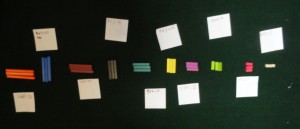
Bits and Pieces: There is so much more to share – deeper understanding of multiplication and division, enthusiasm for blogging, photography in technology class, creating beautiful pictures and writing in artist-writers’ workshop, being caring friends – and the note is already too long! Your children are hard working and fun loving. They are becoming more aware of using time wisely and making more skillful transitions from one activity to the next. They are considering how their actions affect success. They seem to enjoy their days and are growing in confidence. All wonderful things. 3E is a nice place to be.
- We finished Quinny and Hopper. Ask your child what advice they might give each of the characters about friendship and being accepting of differences.
- Our next challenge with Mr. Caron – outdoors weather permitting – will be on November 10.
- Our Student Led Goal Setting Conferences are planned for November 17 and 18 – please select a time on the schedule sent in your communication folder.
- Term 1 report cards will be sent home November 24. These will not have written comments. We will meet for parent – teacher conferences in the first week of December to review the goals your child presented and set some of ourselves as we work together to support his/her learning for the year.
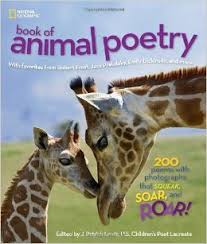 J. Patrick Lewis, former U.S. Children’s Poet Laureate has joined forces with National Geographic to create two stunningly beautiful anthologies. The anthologies share rich collections of poems; some that may already familiar to you, as well as other poems that are newly written. Each page is a feast for your eyes, as well as music for your ears. One page will lead to the next and on to the next and the next. Each time I read from one of these book I feel a little breathless. I can’t seem to read and look fast enough. I think you’ll feel the same way.
J. Patrick Lewis, former U.S. Children’s Poet Laureate has joined forces with National Geographic to create two stunningly beautiful anthologies. The anthologies share rich collections of poems; some that may already familiar to you, as well as other poems that are newly written. Each page is a feast for your eyes, as well as music for your ears. One page will lead to the next and on to the next and the next. Each time I read from one of these book I feel a little breathless. I can’t seem to read and look fast enough. I think you’ll feel the same way.